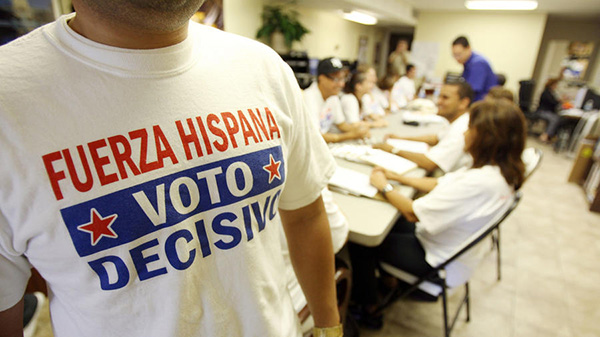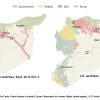
Donald Trump is doing a great disservice to the Republicans with his absolute and sarcasm-studded opposition to immigration and his criticism of the party’s other aspiring candidates, whether Marco Rubio or Jeb Bush, for speaking in Spanish during their campaigns. Reflecting the rapid demographic change in the US, some calculations show that, whoever the Republican candidate might be, he will have to secure the support of between 47% and 52% of the Hispanic –or Latino– vote to reach the White House. This, of course, is in addition to courting other sectors of the population, such as the female vote, which is also being alienated by Trump’s antics.
Demographic change in the US is moving very fast. By 2043 an estimated 50% of its population will be of minority or non-white origin, with Latin Americans outnumbering the rest. The figure’s translation into electoral terms is being slower, but significant. For the 2016 elections, the Center for American Progress (CAP, a Democrat think-tank democrat, from which these data mainly derive) expects there to be 58.1 million Hispanics in the US, that is, 5 million more than in 2012, and accounting for 16% of the US adult population aged 18 or above. The number of eligible Hispanic voters, ie, those that can register on the electoral census (a necessity to be eligible to vote in the US) should account for 13% of the total, 2% more than in the last presidential elections. In some key states, such as Florida, the number should rise from 17.1% to 20.2%.
But not all who can register will be doing so, and of those who do, many might end up not going to the ballots. In 2012, 13.7 million Hispanics were registered voters and 11.2 million actually voted in the presidential election won for the second time by Barack Obama. Certainly, there are more of them in each successive election. The Democrats are making a great effort to promote registration and participation. Obama has made important decisions on the regularisation of immigrants. The White House has launched a Project on New Americans and is involved in an intensive awareness campaign. September 15 to October 15 is the National Hispanic Heritage month and 100 organisations have also embarked on a campaign to encourage Hispanics to register on the electoral roll and vote.
Latinos do not necessarily vote Democrat. In fact, George W. Bush won 44% of the national Hispanic and Asian vote in 2004, and 56% of the Florida Latinos, but in the last election in 2012 the Republican vote fell to 39% following the backlash against the Republican’s anti-immigration and anti-regularisation discourse. They changed tack for the 2014 mid-term elections, realising they needed to attract an electorate for which immigration is the priority, especially given the hundreds of thousands of Hispanics living in the US irregularly but contributing to the economy and paying taxes.
Mobilisation amongst Latino voters is growing. In Arizona, Colorado and Nevada the Democrats are taking a growing proportion of the Hispanic. This could, for instance, help the party to regain North Carolina, even if they continue to lose ground among white voters there. Should Trump become the candidate, he will have forfeited the Hispanic vote (and that of other minorities), and with it probably the election. If he drops out and his place as candidate is taken by the likes of Rubio or Bush (or any other), they will have a hard job to repair the damage he has caused.


